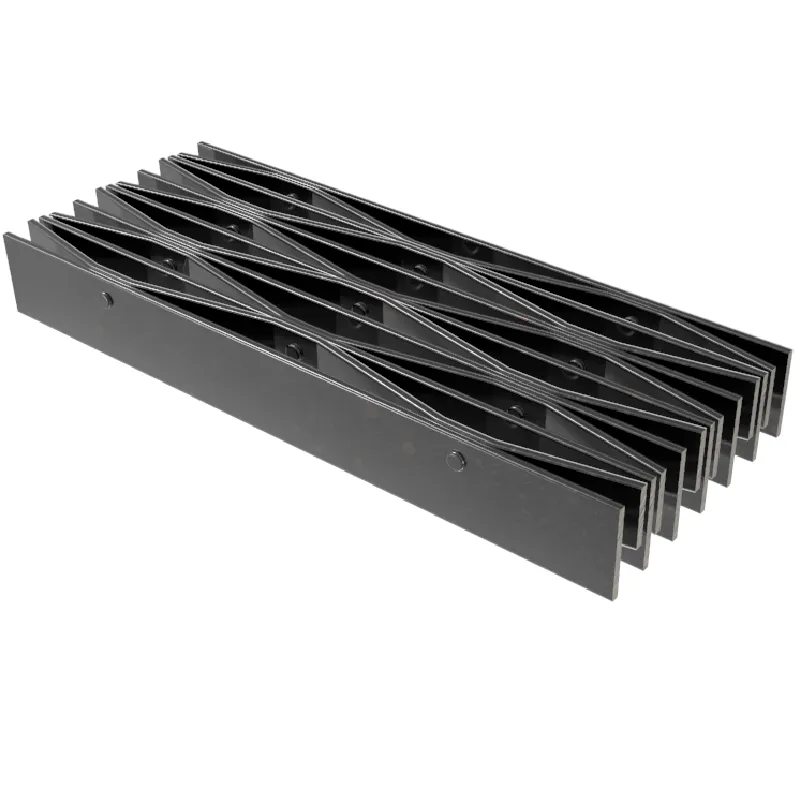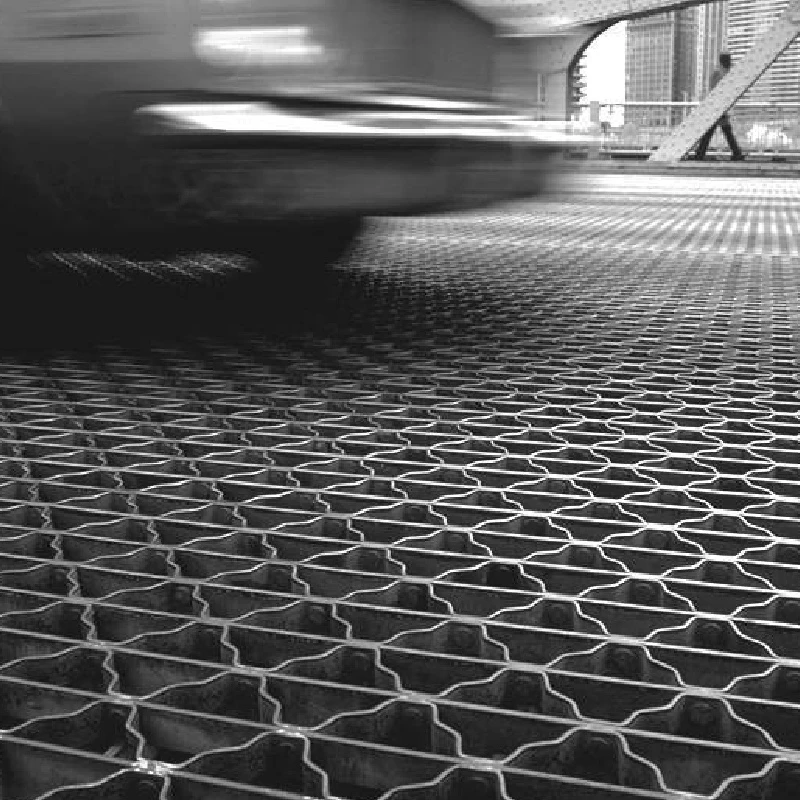- Industrial zone, South of Anping Town, Hengshui, Hebei, China.
- sales@hfpetromesh.com
- +86-18931809706
Industrial Steel Grating: Anti-Slip, Galvanized, Custom
Riveted Grating: the workhorse you deploy when failure isn’t an option
When you’re speccing an industrial steel grating for serious loads, odd spans, and wet shoes, riveted grating quietly does the heavy lifting. I’ve walked more catwalks than I care to admit, and—honestly—this format keeps popping up on bridge walkways, plant mezzanines, and utility covers for good reasons: high shear capacity, great anti-slip, and a forgiving install window.

What’s trending (and why riveted matters)
Market trend-wise, I’m seeing more specifiers move from welded to industrial steel grating with riveted connections on bridge retrofits and high-traffic facilities. Supply-chain volatility nudged many toward robust, serviceable designs with longer coatings life. Also: stricter slip-resistance targets and lifecycle costing—especially for ports and wastewater. Not glamorous, but practical.
Where it comes from and what it’s for
Origin: Industrial zone, South of Anping Town, Hengshui, Hebei, China. The line I toured there focused on bridge construction, wheeled equipment lanes, anti-slip walkways, drain covers—basically anywhere you need load-bearing open steel deck with safe drainage and grip.
Process flow (the practical version)
- Materials: Low-carbon steel bearing bars (e.g., ASTM A36) and crimped cross bars; optional stainless (304/316) for corrosives.
- Methods: Slot punching of bearing bars → cross bar insertion → cold riveting (solid steel rivets) → edge banding → trimming.
- Surface: Hot-dip galvanizing per ASTM A123 / EN ISO 1461; optional paint or duplex coat.
- QC & testing: Dimensional check, load/deflection (per NAAMM MBG guidance), coating thickness, adhesion, and slip-resistance sampling.
- Service life: In C3 environments, galvanized decks often last ≈ 20–30 years before major recoating; harsher atmospheres vary with ISO 9223 category.
- Industries: Bridges, petrochemical, wastewater, mining, power, marine terminals, food (stainless), OEM platforms.

Typical specifications (real-world values)
| Item | Typical value | Notes |
|---|---|---|
| Bearing bar size | 25×3 mm to 65×6 mm | Heavier bars for longer spans/vehicular |
| Bar spacing | 30–40 mm (bearing) / 50–100 mm (cross) | Adjust for load and heel-safe needs |
| Rivet pitch | ≈ 100–150 mm | More rivets = stiffer lattice |
| Finish | Hot-dip galvanized | Coating mass around 450 g/m²; varies |
| Slip surface | Serrated or plain | Serrated favored for wet/icy decks |
| Standards | ASTM A36, ASTM A123, NAAMM MBG | Project specs may add OSHA/ISO refs |
Where it shines
- Bridge construction and inspection walkways (low maintenance, strong riveted nodes).
- Wheeled equipment routes—forklifts, carts; the lattice handles point loads well.
- Anti-slip walkways and trench/drain covers with fast runoff.

Vendor snapshot (indicative, not exhaustive)
| Vendor | Core offering | Lead time ≈ | Coating | Certs | Notes |
|---|---|---|---|---|---|
| HF Petro Mesh (Riveted Grating) | Custom riveted panels, banding, covers | 2–5 weeks | HDG; duplex on request | ISO 9001 (typ.) | Strong in bridge/wastewater packages |
| Vendor B | Welded + riveted grating | 3–6 weeks | HDG, paint | ISO 9001 | Broad catalog, standard sizes |
| Vendor C | Press-locked + riveted | 4–8 weeks | HDG, powder | ISO 9001 | Good for architectural grids |
Customization I typically advise
- Panel fit: cut-to-size with banding plates pre-drilled for clips.
- Profile: heavier bearing bars for spans > 1.2 m; serrated tops for wet zones.
- Coating: HDG baseline; duplex (zinc + epoxy/poly) for C4–C5 atmospheres.
- Alloys: stainless 316 near chlorides; A36 is fine inland & indoors.
Case notes from the field
Bridge walkway retrofit, northern port: 38×5 mm serrated bearing bars, 30/100 spacing, panels 900×1800 mm. Load test to 5.0 kN/m² showed deflection under L/200; slip-resistance (wet) measured SRT ≈ 65—operators said “finally, no ice skates feeling.” Another wastewater plant swapped corroded checker plates for industrial steel grating; maintenance calls dropped, and drainage complaints basically vanished.

Testing, data, and safety bits
- Coating: HDG thickness often 70–100 μm per ASTM A123 / EN ISO 1461; field readings can vary with steel chemistry.
- Load/deflection: verify against NAAMM MBG and project-specific L/200 or L/240 criteria.
- Slip-resistance: target wet pendulum or equivalent that satisfies OSHA 1910 walking-working surfaces; serrated helps a lot.
- Service life: pick coating system by ISO 9223 corrosivity; budget inspections every 2–5 years, touch-up cuts/edges.
Final thought: If your spec calls for a tough, serviceable deck, industrial steel grating in riveted form is, frankly, a safe bet. And yes, many customers say installation goes smoother than they expected—less rework, better footing from day one.
Authoritative references
- ASTM A123/A123M: Standard Specification for Zinc (Hot-Dip Galvanized) Coatings on Iron and Steel Products.
- NAAMM MBG: Metal Bar Grating Manual (design, loads, and installation guidance).
- EN ISO 1461: Hot dip galvanized coatings on fabricated iron and steel articles.
- OSHA 29 CFR 1910 Subpart D: Walking-Working Surfaces (slip/fall prevention).
- ISO 9223: Corrosion of metals—Corrosivity of atmospheres—Classification, determination, and estimation.
-
Shaker Screen for Sale – Durable, API-Rated, Fast ShippingNewsNov.17,2025
-
Industrial Steel Grating — Durable, Anti-Slip, GalvanizedNewsNov.17,2025
-
Industrial Steel Grating: Durable, Anti-Slip, GalvanizedNewsNov.17,2025
-
Shale Shaker Screen – Durable Mesh, Factory Price, OEMNewsNov.17,2025
-
Shale Shaker Screen Factory | API Quality, OEM, Fast ShipNewsNov.17,2025
-
Metal Grating for Sale – In Stock, Custom Sizes, Quick ShipNewsNov.10,2025